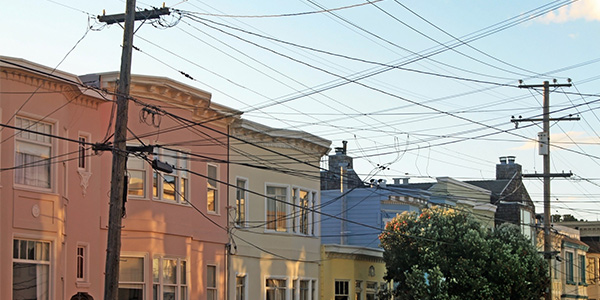By Hudson Sangree
SACRAMENTO, Calif. — One of the biggest energy-related bills of the year in California shot through the State Legislature earlier this summer, well ahead of lawmakers’ Sept. 13 deadline to pass legislation, but other noteworthy electricity bills landed on the desk of Gov. Gavin Newsom in recent days.
Among them was SB 520, which reworks the notion of the provider of last resort (POLR) in the face of the state’s fast-changing electricity landscape. Traditionally, California’s three big investor-owned utilities have filled that role. But with the emergence of community-choice aggregators (CCAs), lawmakers decided the old rules needed updating. (See Calif. Lawmakers Reveal Growing Divisions over CCAs.)
The bill would let CCAs be the POLRs in their service territory, contingent on approval by the California Public Utilities Commission. State Sen. Bob Hertzberg (D) authored the bill.
Another measure, SB 550, conceivably could help shepherd the sale of PG&E Corp.’s assets in bankruptcy to the city of San Francisco or other public entities hoping to buy. San Francisco on Sept. 6 offered the bankrupt utility $2.5 billion to sell its wires and poles. (See PG&E Ends Bond Bid as SF Makes Wires Offer.)
PG&E has made public statements appearing to reject the offer but leaving the door ajar. It said selling its San Francisco wires wasn’t in the best interests of the company and its shareholders but that it remained open to discussing the matter with the city.
Under current law, the CPUC must evaluate the sale or merger of utility assets based on the net benefit to ratepayers. SB 550 would require the commission to also review the acquisition of an IOU’s assets based on safety criteria. It also specifies that the commission’s review would apply even if the sale is to a public entity, such as a city.
But the bill would also let the CPUC delay its implementation until July 2021, meaning SB 550 may not apply to PG&E if it becomes law — and the utility decides to accept the city’s offer. PG&E must conclude its bankruptcy reorganization by June 30, 2020, to access a $21 billion wildfire recovery fund.
Two measures authored by Sen. Steven Bradford (D) — a former public affairs manager for Southern California Edison and member of the Energy, Utilities and Communication Committee — bear on the state’s long-term clean-energy goals.
SB 676 seeks to ensure that adding millions of electric vehicles in coming years won’t overtax the grid and lead to greater need for fossil-fuel generation. It would instruct the CPUC to establish strategies and metrics to integrate EVs, including time-of-use rates that encourage charging during the “belly” of the state’s so-called duck curve, when there’s a glut of cheap solar power in the middle of the day.
Bradford’s SB 155 would require the CPUC to monitor the renewable portfolio standards of load-serving entities to make sure they’re meeting their goals. The larger goal is for the state to rely on zero-carbon energy sources by 2045, as required by last year’s SB 100.
Newsom has yet to sign the four bills, as of press time. The governor has until Oct. 13 to approve or veto measures sent to him this legislative session. Of the 2,600 bills introduced this year, more than 100 dealt with electricity, but only about a quarter of those measures passed.



